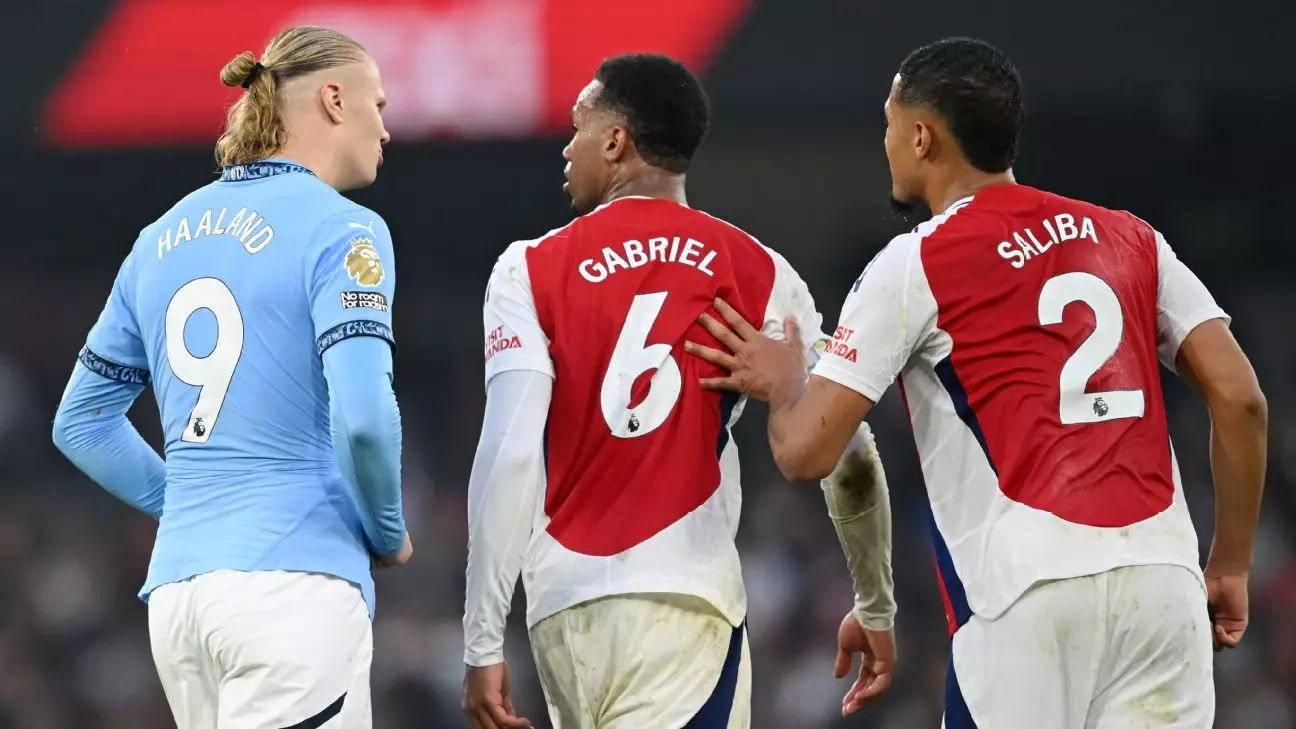In modern football, the significance of traditional shirt numbers appears to have diminished considerably, especially in the context of high-stakes leagues like the Premier League. One only needs to glance at current squad compositions to realize that the classical numbering system—where players donned numbers 1 through 11 according to their positions—is a fading relic. As early as 1998, no team has started a Premier League season with players sporting these iconic numbers from 1 to 11. This evolution invites a critical examination of what it means for football culture: is it merely a trend, or a genuine dilution of the sport’s cherished customs?
Historically, each player’s number signified their role on the pitch, creating a structured and recognizable hierarchy during matches. The goalkeeper wore No. 1, defenders donned numbers 2-5, and forwards claimed the coveted Nos. 9 and 10. This system created a clean narrative for fans to follow and players to embody. However, contemporary squad systems have ushered in a fluidity where the traditional format has been upended.
Take, for instance, the recent revelation that players such as Declan Rice wear No. 41 and Trent Alexander-Arnold sports No. 66. These unconventional numbers not only challenge our nostalgic perspectives but also reveal the commercialization of the sport. Club branding and individual player identity now seem to trump these historical conventions. Such a transformation leads one to ponder: is this evolution progress, or does it symbolize a disconnection from football’s roots?
In this context, one intriguing exercise is to assess which players from the Premier League’s ‘Big Six’—comprising Arsenal, Chelsea, Liverpool, Manchester City, Manchester United, and Tottenham Hotspur—could field a viable starting XI based solely on traditional numbers from 1 to 11. An abridged overview sheds light on both the potential and the glaring gaps within these formidable squads.
Starting with Arsenal, they may present a relatively stable formation despite lacking a goalkeeper, which is a critical flaw (yes, a team without No. 1!). They can form a nearly competent 4-2-3 lineup, featuring solid defensive contributors such as Kieran Tierney and Ben White. However, they face a notable absence under the crossbar. Chelsea, on the other hand, struggles with morale after not including star talent Cole Palmer due to his shirt number being 20. Yet they can still muster a starting lineup, showcasing an array of defenders and a front line lacking cohesiveness.
Meanwhile, Liverpool demonstrates an impressive capability to form a robust 10-man squad, missing only the retired Thiago Alcantara’s No. 6. Their lineup underscores the club’s depth and competitive edge, honoring traditional shirt assignments while thriving on their contemporary roster. Conversely, clubs like Manchester City and Tottenham starkly illustrate the ramifications of a loosening grip on structural numbering. City finds itself with a major void at the No. 1 position and several key absences in attacking roles. Tottenham’s plight is even more pronounced—they can only field seven players, a tale of desperation in modern football management.
As football evolves, the conversation around shirt numbers serves as a microcosm for wider discussions on the sport’s identity. While some view the current trend of whimsical numbering as a natural evolution, others lament a loss of character that once defined the game. For many dedicated fans steeped in tradition, the erosion of the numeric hierarchy hints at something more significant—the sacrifice of authenticity in favor of marketing tactics and a shift in focus from teamwork to individual branding.
Moreover, the absence of key players with ‘classic’ numbers provokes an exploration of identity within the sport. Fans often become attached not just to teams or tactics but also to players and the narratives their numbers represent. Stripping away this historical significance may inadvertently strip the sport of the emotional ties that bind it to its followers.
The evolution of shirt numbers in Premier League football reflects broader trends within the landscape of sports culture. While change may be necessary to accommodate the modernizing nature of the game, it is equally vital to recognize and celebrate the traditions that shaped football into what it is today. If the sport wishes to hold on to its legacy, a balance must be struck between embracing innovation and honoring the values that made fans fall in love with the beautiful game in the first place. Without that balance, we may be left wondering not just about numbers, but about the core principles that make football a passion for millions around the globe.

